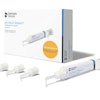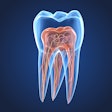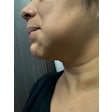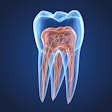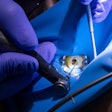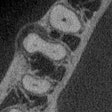Prefabricated or customized fiber posts may minimize the risk of failure in endodontically treated teeth undergoing indirect restorations, according to a review and meta-analysis recently published in the Journal of Dentistry.
Furthermore, in direct restorations, the use of posts may be optional, and its should be guided by the specific conditions particular to each case, the authors wrote.
"Overall, restorations with posts showed significantly lower failure rates compared to those without posts," wrote the authors, led by Jacqueline Salomão Jardim of the Federal University of Juiz de Fora in Brazil (J Dent, April 9, 2025).
The study involved electronic searches across Medline/PubMed, Embase, Scopus, and Web of Science, along with gray literature, identifying 23 articles for full-text review, of which 13 randomized clinical trials met the inclusion criteria, they wrote.
Eligible studies directly compared failure rates of endodontically treated teeth with or without posts, involving either direct (resin or amalgam) or indirect (partial crowns, full crowns, or veneers) restorations for coronal reconstruction, using any type of post (prefabricated metal, cast metal, or fiber [glass, carbon, or quartz]), with at least 12 months of follow-up and a minimum of 10 restorations per group.
Restorations with posts had significantly lower failure rates than those without (p = .001, risk ratio [RR]: 0.61), with subgroup analysis showing clear benefits for post use in indirect restorations (p < .001, RR: 0.44) but no significant difference in direct restorations (p = .74, RR: 1.10), they wrote.
Significant advantages were observed for prefabricated fiber posts (p < .001, RR: 0.54) and customizable fiberglass posts (p = .001, RR: 0.66), while cast post and core (p = .66, RR: 0.84) and prefabricated metallic posts (p = .67, RR: 1.19) showed no significant benefit. Of the included studies, five had a low risk of bias and seven raised some concerns.
However, the study had limitations. The evidence was of low certainty, therefore the findings should be interpreted with caution, the authors added.
"Clinicians should consider the individual characteristics of teeth when determining the most appropriate restorative approach," they wrote.



